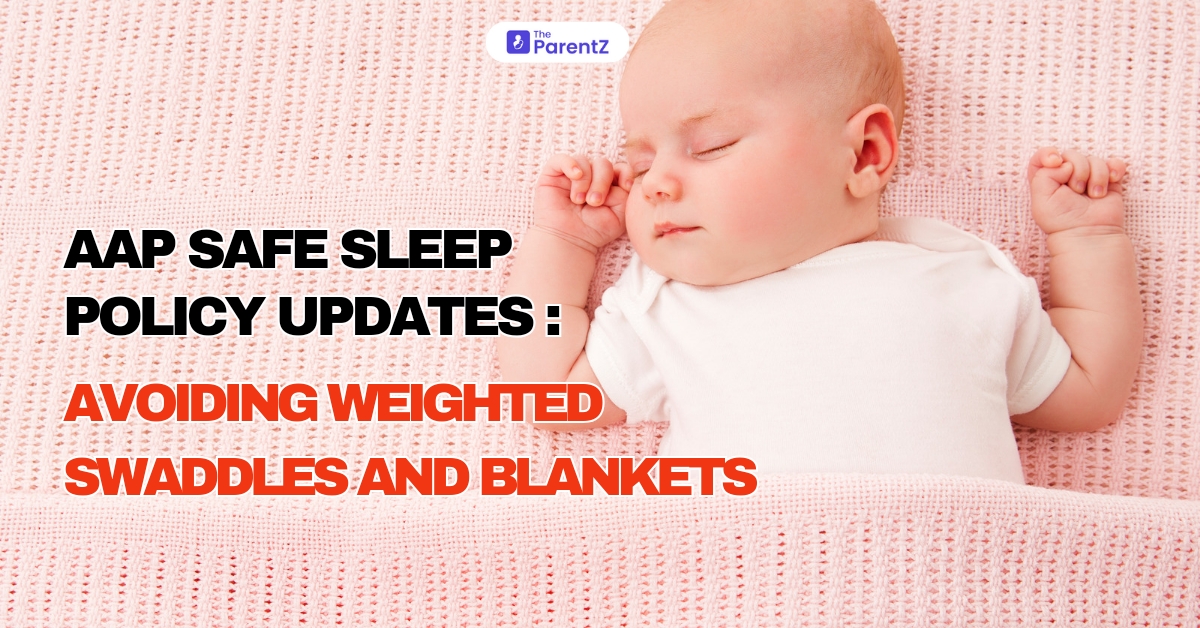Ensuring the safety of infants during sleep is a top priority for parents and caregivers. The American Academy of Pediatrics (AAP) provides comprehensive guidelines to promote safe sleep practices and reduce the risk of Sudden Infant Death Syndrome (SIDS) and other sleep-related infant deaths. Recently, the AAP has updated its safe sleep policy to explicitly discourage the use of weighted swaddles and blankets. This article delves into these updates, explaining the reasons behind them and offering practical advice for safe infant sleep.
Introduction to AAP Safe Sleep Guidelines
The AAP’s safe sleep guidelines aim to provide parents and caregivers with evidence-based practices to ensure infants sleep safely. These guidelines cover various aspects of infant sleep, including the sleep environment, positioning, and recommended sleepwear. The primary objective is to reduce the risk of SIDS and other sleep-related infant fatalities.
Understanding the Risks of Weighted Swaddles and Blankets
Weighted swaddles and blankets have gained popularity in recent years, marketed for their supposed benefits in promoting better sleep by mimicking the feeling of being held. However, these products pose significant risks to infants, which the AAP has highlighted in its updated guidelines.
Risks Associated with Weighted Swaddles and Blankets
- Restricted Breathing: Weighted swaddles and blankets can put undue pressure on an infant’s chest and abdomen, potentially restricting their breathing.
- Overheating: Infants are prone to overheating, which is a known risk factor for SIDS. Weighted blankets can contribute to overheating by trapping too much warmth.
- Impaired Mobility: Weighted swaddles can restrict an infant’s movement, making it difficult for them to reposition themselves if they roll over, increasing the risk of suffocation.
- Sudden Infant Death Syndrome (SIDS): Any product that affects an infant’s ability to breathe freely or maintain a safe sleeping position can increase the risk of SIDS.
AAP’s Updated Recommendations
In response to these risks, the AAP has updated its safe sleep guidelines to explicitly advise against the use of weighted swaddles and blankets. The updated recommendations emphasize the importance of a safe sleep environment and practices that do not compromise an infant’s ability to breathe or move.
Key Points of the Updated Recommendations
- Avoid Weighted Products: Parents and caregivers should avoid using weighted swaddles, blankets, or any sleepwear that incorporates heavy materials.
- Back to Sleep: Always place infants on their backs to sleep, on a firm and flat sleep surface.
- Bare Crib: The crib should be free of soft bedding, pillows, stuffed toys, and bumper pads to reduce the risk of suffocation.
- Appropriate Swaddling: If swaddling is used, it should be done correctly and discontinued as soon as the infant shows signs of rolling over.
- Room Sharing: It is recommended that infants sleep in the same room as their parents, but not in the same bed, for at least the first six months.
Alternative Safe Sleep Practices
To ensure the safety and well-being of infants during sleep, parents and caregivers should follow established safe sleep practices. Here are some effective alternatives to using weighted swaddles and blankets.
Creating a Safe Sleep Environment
- Firm Sleep Surface: Use a firm mattress covered with a fitted sheet in a safety-approved crib, bassinet, or play yard.
- Room Temperature: Keep the room at a comfortable temperature to avoid overheating. Dress the baby appropriately for the environment.
Appropriate Swaddling Techniques
Swaddling can be a helpful technique to soothe infants and promote sleep, but it must be done correctly:
- Light Swaddling: Use a light, breathable blanket to swaddle the baby, ensuring the hips and legs can move freely.
- Arms Free: Consider leaving the arms free to allow for natural movement and reduce the risk of suffocation.
- Discontinue Early: Stop swaddling as soon as the baby shows signs of rolling over, typically around 2 to 3 months of age.
Sleepwear and Bedding
- Sleep Sacks: Use wearable blankets or sleep sacks that are designed to keep infants warm without the risk of suffocation. These should not be weighted.
- Avoid Loose Bedding: Do not place loose blankets, quilts, or comforters in the crib. Instead, dress the baby in appropriate sleepwear to maintain warmth.
Importance of Following Safe Sleep Guidelines
Adhering to the AAP’s safe sleep guidelines is crucial for reducing the risk of SIDS and other sleep-related infant deaths. Safe sleep practices create a secure environment that allows infants to breathe easily and move freely, significantly decreasing the likelihood of accidents and fatalities during sleep.
Key Benefits of Following Safe Sleep Guidelines
- Reduced Risk of SIDS: Safe sleep practices have been shown to lower the incidence of SIDS, providing peace of mind for parents and caregivers.
- Enhanced Infant Health: A safe sleep environment promotes better overall health and development for infants.
- Informed Parenting: Educating parents and caregivers about safe sleep practices empowers them to make informed decisions that protect their children.
Conclusion
The AAP’s updated safe sleep guidelines underscore the importance of avoiding weighted swaddles and blankets to ensure the safety of infants during sleep. By following these guidelines and implementing alternative safe sleep practices, parents and caregivers can create a secure environment that minimizes the risks of SIDS and other sleep-related infant deaths. Prioritizing safe sleep practices is a vital step in promoting the health and well-being of infants, fostering a foundation of safety and care from the earliest stages of life.









Be the first one to comment on this story.